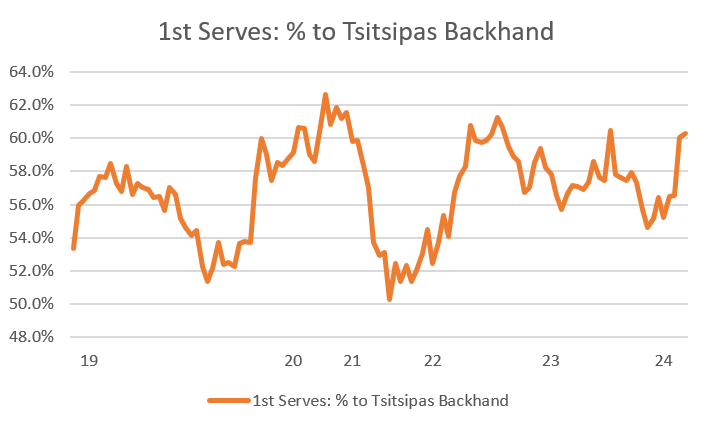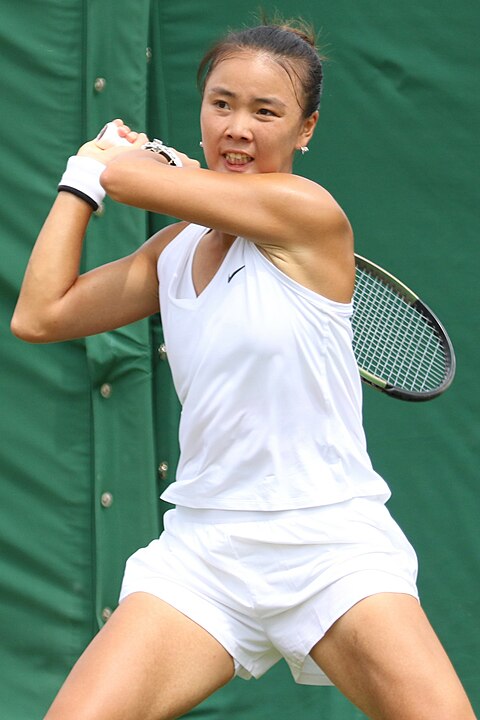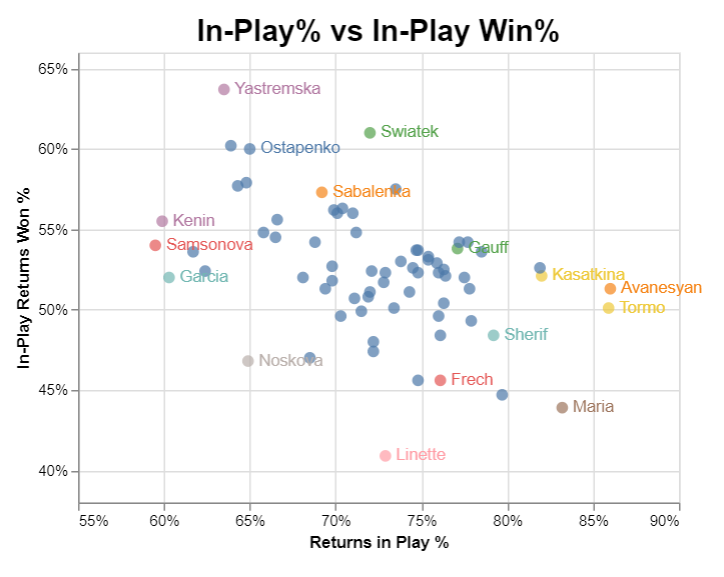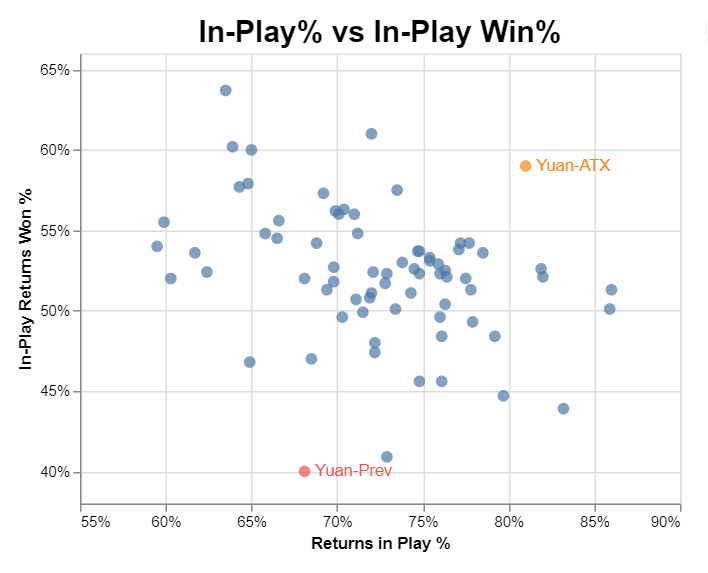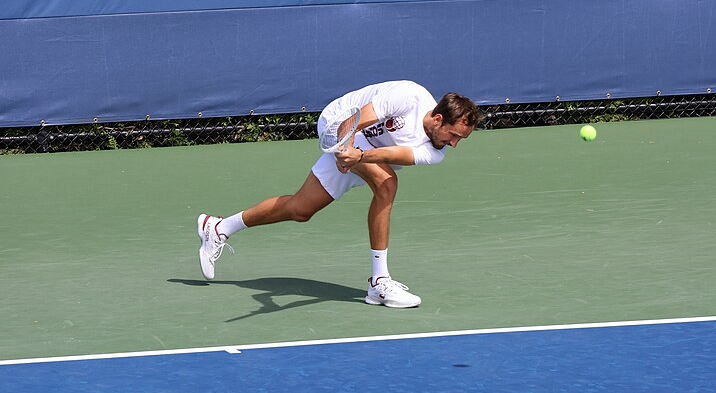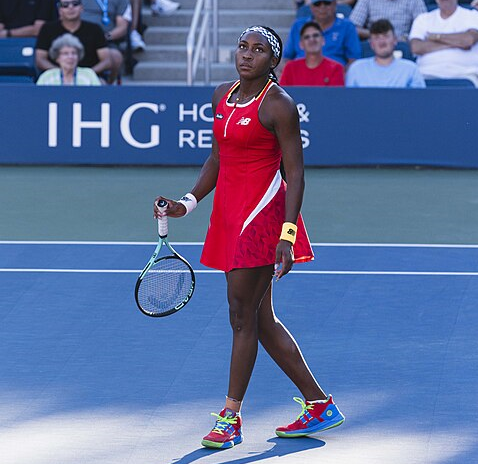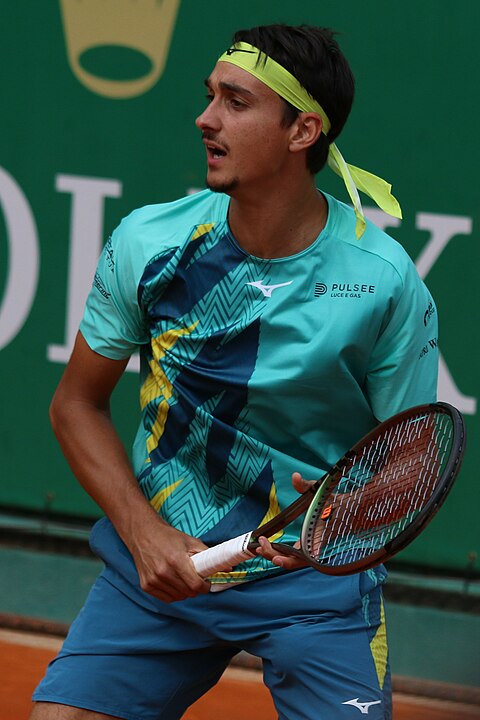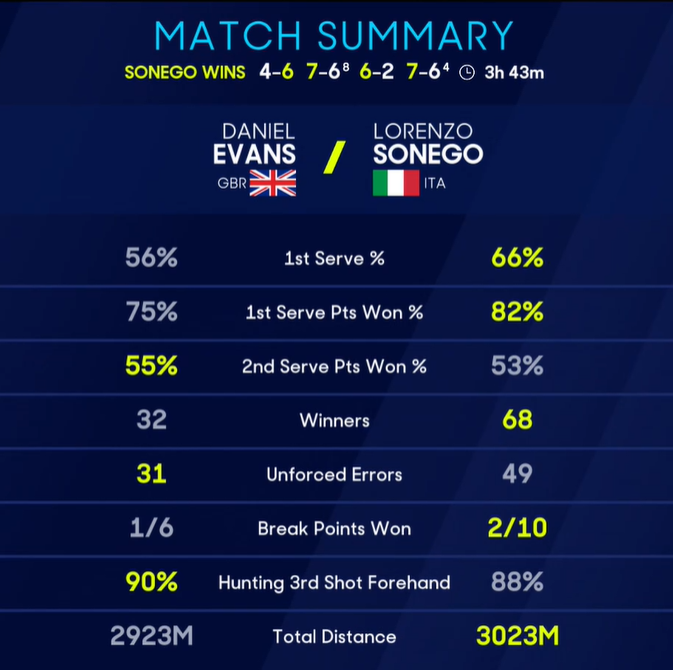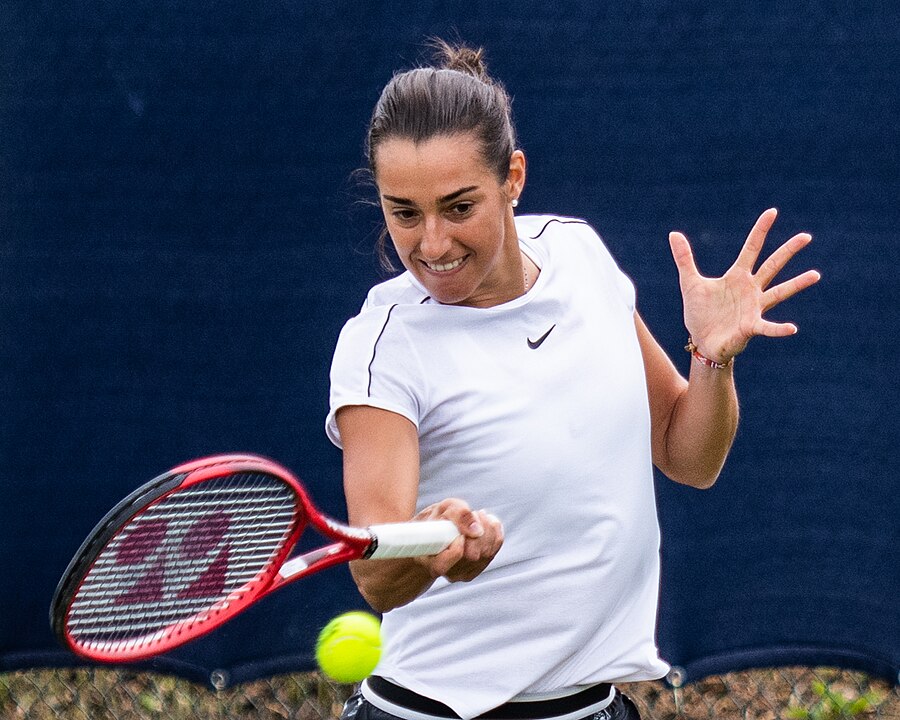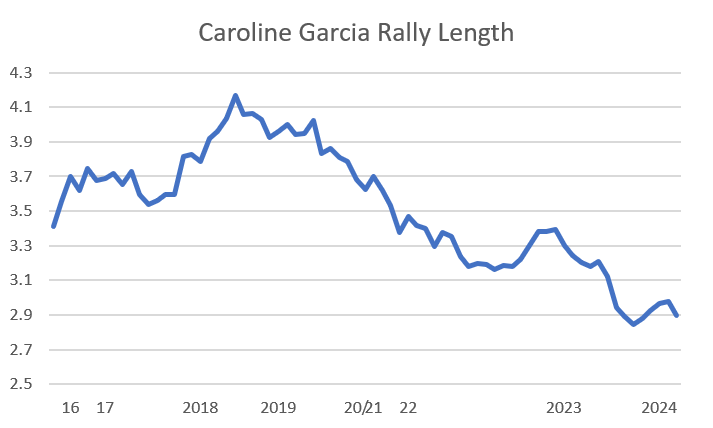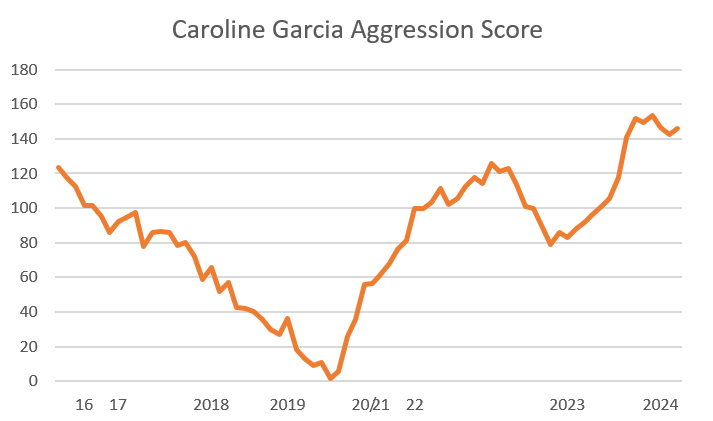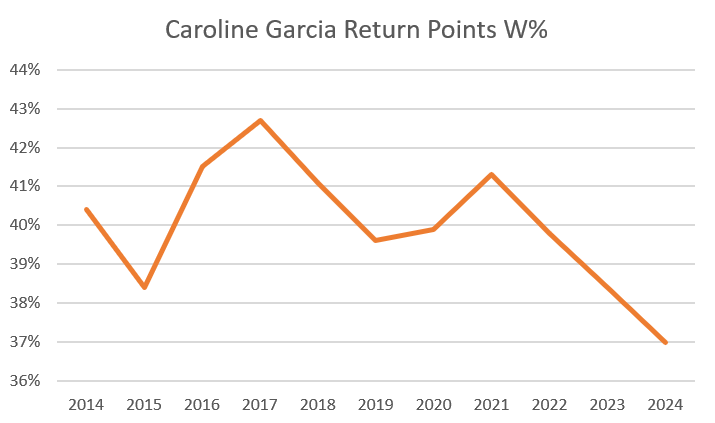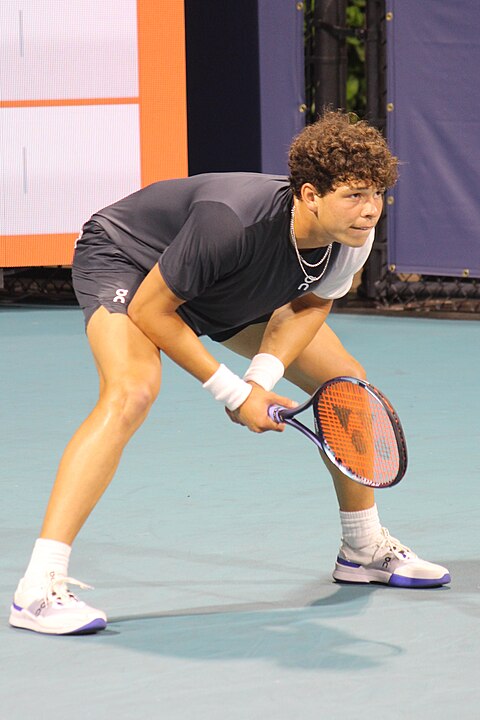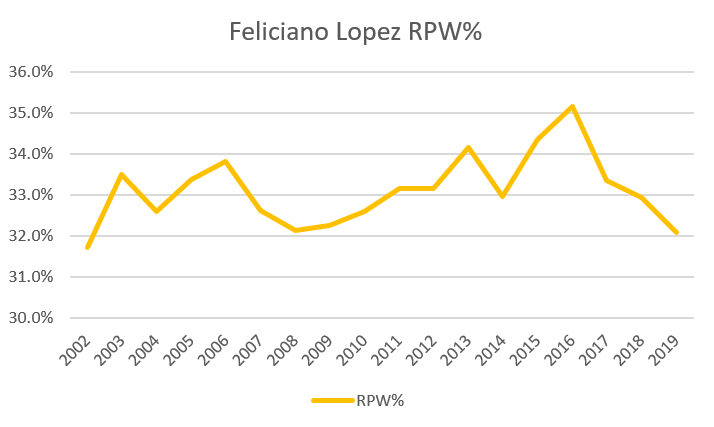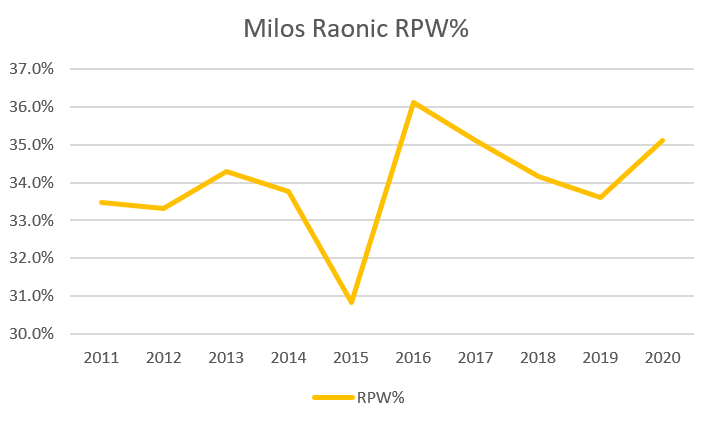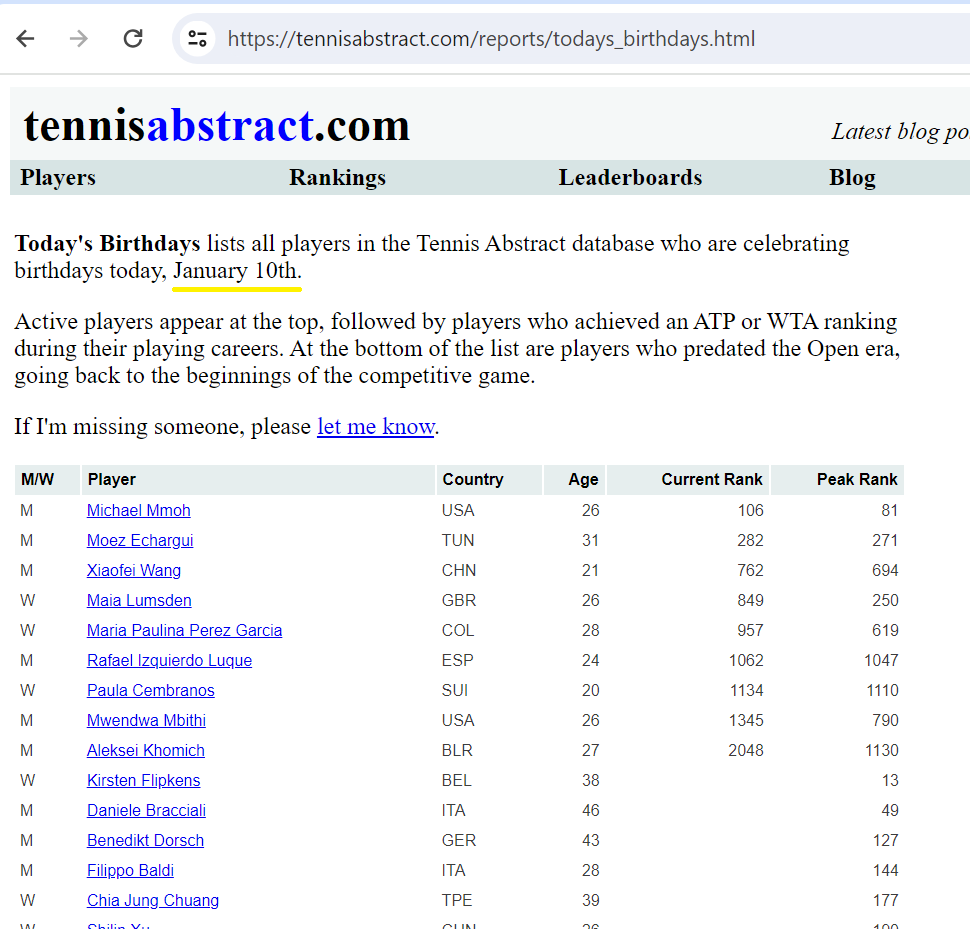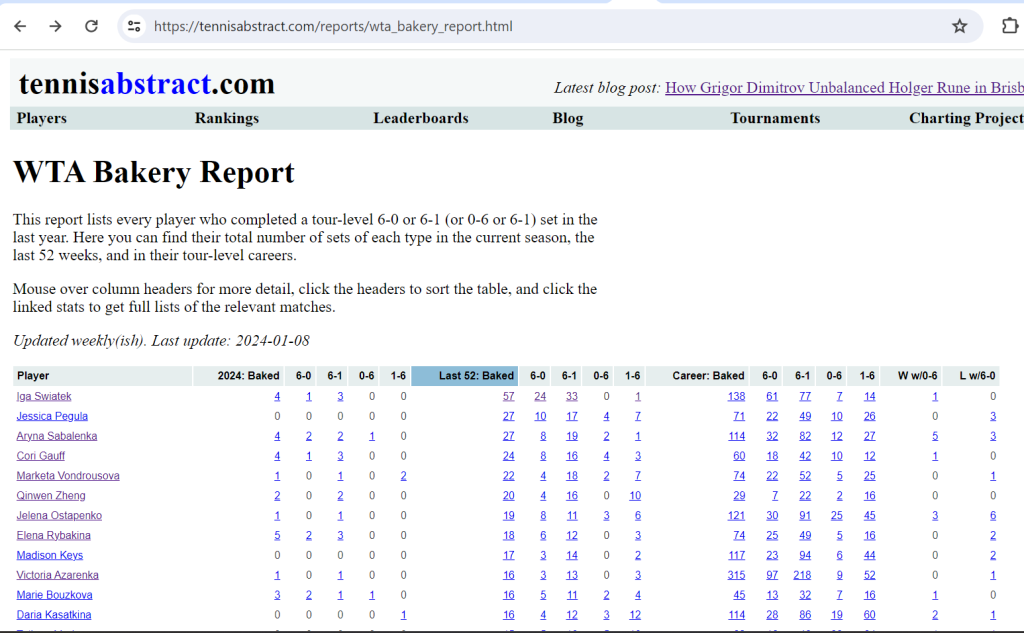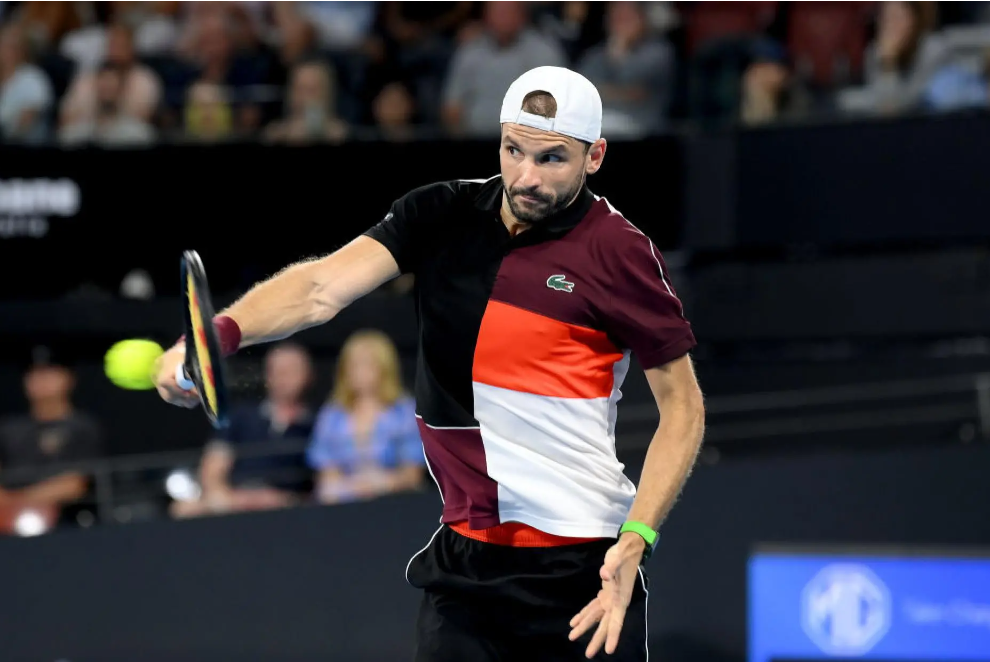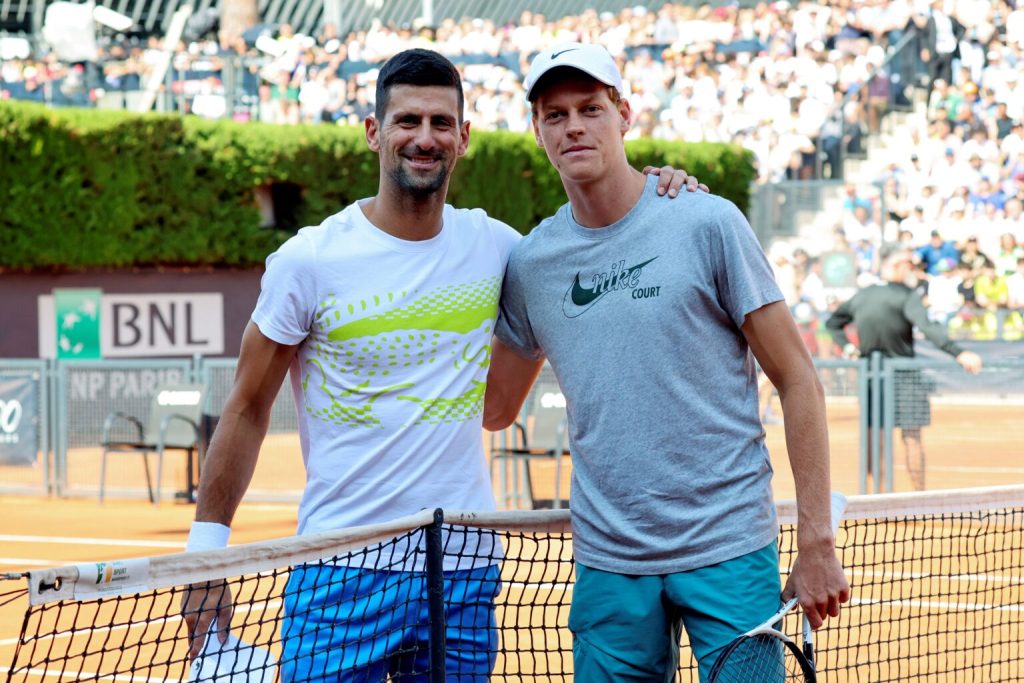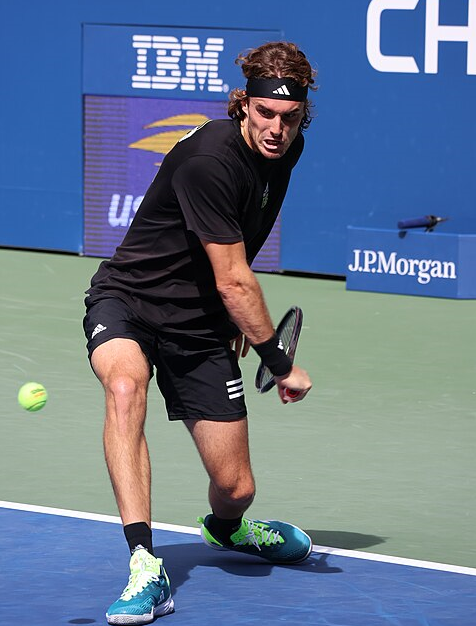
Yesterday in Indian Wells, Jiri Lehecka knocked out Stefanos Tsitsipas with a masterclass of precision power hitting. The Czech tallied 27 winners to Tsitsipas’s 8, and that’s only after a belated burst of energy from the Greek in the second set. When I wrote about Lehecka in January, I chided him for an “excess of self-restraint,” hitting too many balls down the middle to take full advantage of his baseline weapons. He avoided that trap yesterday, and Tsitsipas paid the price.
Still, Lehecka didn’t seize upon every exploitable edge. The Tsitsipas backhand, pretty as it is, is a bit cumbersome, often leaving him slow to react. The time he needs to unleash the one-hander is a key reason why Stef is one of the most surface-sensitive players on tour, preferring courts that give him an extra split-second to prepare. Indian Wells plays slow for a hard-court event, but it’s hardly the same as the Monte-Carlo dirt. Combined with Lehecka’s power, a hard court has the potential to expose the Greek’s weaker side.
Lehecka generally stuck to the routine, sending both forehands and backhands cross-court, rarely doing anything in particular to force his opponent to hit a backhand. Still, the Czech made one concession to his opponent’s tendencies: He hit more serves than usual to the backhand. Lehecka’s favorite serve is the deuce-court slider wide, and he scored a few points blasting balls that Tsitsipas’s forehand couldn’t reach. But more often, he forced Stef to hurry the backhand, or chip a return.
The results were devastating. The Czech typically hits about half of his serves to each wing. 51% of his first serves and 52% of his seconds go to the backhand. Yesterday, he went that way 61% and 58% of the time, respectively. When Lehecka hit a first serve to the backhand, Tsitsipas got it back less than 60% of the time… and he won only 12% of those points. When a second serve went to the backhand, Stef got a more respectable 71% back, but still won just 14%. It was a short match, so we’re not talking about that much action: In nine return games, Tsitsipas won just four points when he had to make a backhand return.
The word is out–not that it was ever really a secret. Two weeks ago in the Acapulco quarter-finals, Alex de Minaur hit 90% of his serves to Tsitsipas’s backhand, beating the Greek for the first time at tour-level in eleven tries. While de Minaur’s persistence was unusual, it made a useful point. Stef–not long ago the third-ranked player in the world–has fallen out of the top ten, and one of the causes is something that every opponent can attack until he patches it up.
Serve this way
Yesterday’s match notwithstanding, Tsitsipas remains an elite server. He held 88.8% of his service games last year, the best mark of his career. His return numbers, though, are sinking. In 2021, he broke one-quarter of the time; last year, that number fell to 19.3%. By that metric, he’s in the bottom third of the ATP top 50.
It’s hard to pinpoint just one element of his return game that has gone astray, because everything is trending downwards. According to Match Charting Project data, he gets 66% of serves back in play–a below-average if acceptable figure–but wins just 42% of those points, one of the lowest marks on tour. Both rates are worse than his career averages of 68% and 44%, respectively.
The decline can’t be entirely blamed on a tour-wide tactical consensus, though Stef’s opponents aren’t helping. Here is a ten-match rolling average of the percentage of first serves hit to the Tsitsipas backhand on hard courts since late 2018:
(Clay courts add another wrinkle to the question, because everyone tends to get more serves to the backhand side on dirt. Four of Tsitsipas’s five most extreme matches by this metric were on clay.)
As always, it can be tough to gain an intuition with an unfamiliar tennis metric. 60% may not sound like a lot, but most servers cluster around the tour average of 52.5%. The servers who most frequently target the backhand side are clay-courters: Albert Ramos tops the list at at 63.5%, with Fernando Verdasco right behind him. At the other extreme, around 45%, are some right-handers, often those who can use height and/or wrist action to open the court with lots of slice. Daniil Medvedev and Andy Murray are two of the best-known proponents of this approach, and Medvedev is partly responsible for some of the troughs in Tsitsipas’s trend line above.
More to the point, the tour is taking aim at Stef’s backhand as much as it does anyone’s. Only Ivo Karlovic was faced with more backhand returns on hard courts. Denis Shapovalov, another one-hander, is in the same range. Again, the message about Tsitsipas’s backhand isn’t new, but it’s no accident that servers are picking on it at the same time that his return numbers take a nosedive.
Crash
Anyone who doesn’t attack the Greek’s backhand return these days is leaving points on the table. Here is another ten-match rolling average, this one showing Tsitsipas’s rate of return points won when his opponent lands a first serve to his backhand:
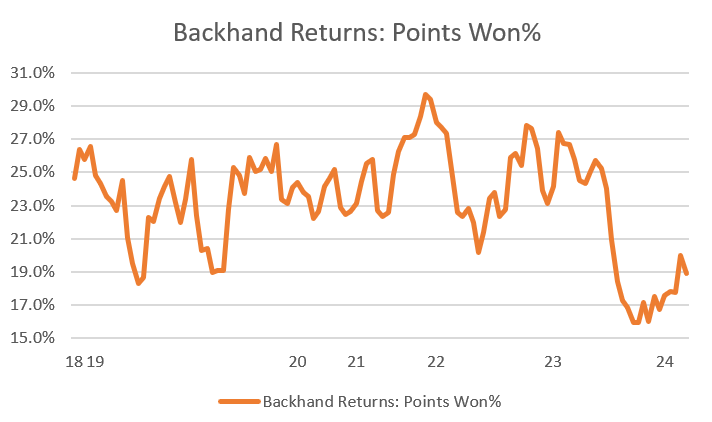
If you’ll forgive me some technical jargon, that’s… not good.
As we’ve seen, Tsitsipas won just 12% of those points against Lehecka. He won only 14% against Taylor Fritz in Australia and 16% in Los Cabos against Casper Ruud. Daniil Medvedev held him to 11% last fall in Vienna. And at the Tour Finals, Jannik Sinner hit 21 first serves in that direction. Tsitsipas won none of them.
Across 125 career charted hard-court matches, Stef has won 23.1% of return points on first serves to his backhand and 24.7% to his forehand. Since the start of 2023, those numbers have fallen to 20.6% and 23.4%. Every important return stat is trending downward, and the backhand numbers are declining fastest of all.
The only question remaining for Tsitsipas’s opponents is this: How much is too much? De Minaur set a new standard by going to the backhand with 90% of his serves, both first and seconds. That’s not unheard of on clay courts (Lorenzo Musetti has come close in two previous meetings with Stef), but it’s very unusual on a hard court. Only a handful of Tsitsipas’s opponents have topped even 70% in one direction.
Against most players, such a balance is probably appropriate. Too much to one side, and you lose the element of surprise. But because so much serving is split 50/50 (or 53/47), we don’t have much data to test the hypothesis. If there’s a 30% chance the server will go one way, will a returner really have an edge in the more likely direction? Against de Minaur, Tsitsipas figured things out quickly enough and inched over toward the backhand side. But not for long: The Aussie cracked one of his few forehand-side serves for an ace, far out of Stef’s reach. Tsitsipas is a good test case for servers looking to experiment: His success rate when he gets the return back in play is near the bottom of the table, so he’s unlikely to turn a match around just because he guesses right a few times.
I have no idea whether, at this point in the Greek’s career, his backhand return is something that can be fixed. In the short term, it will be easier for opponents to expose it than it will be for him to find a solution. Tsitsipas’s return numbers, already dire, could get worse before they get better.
* * *
Subscribe to the blog to receive each new post by email:
